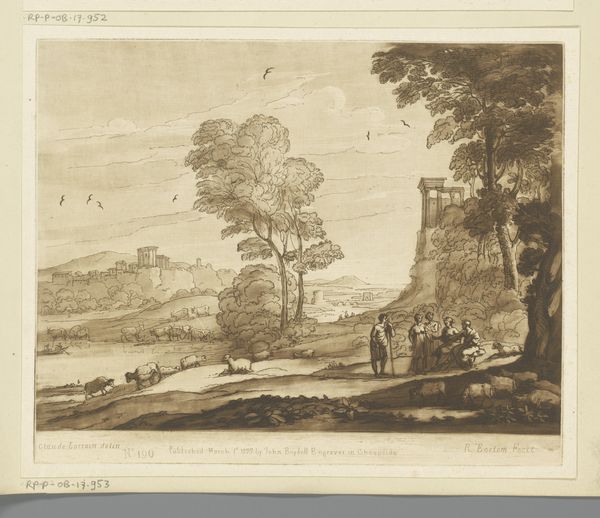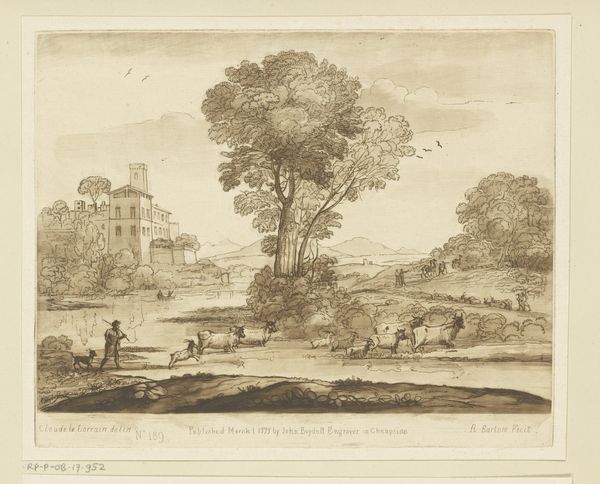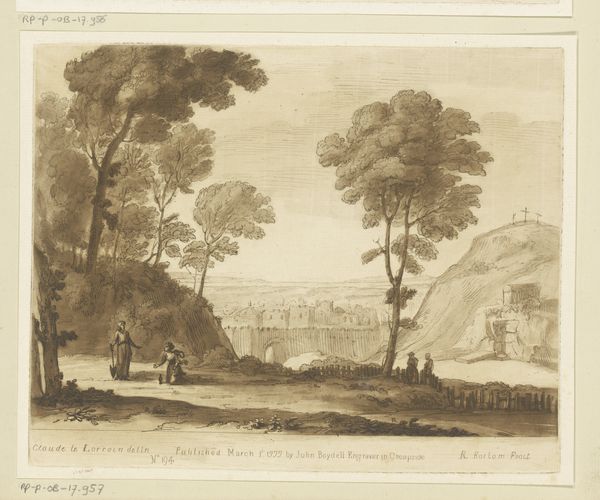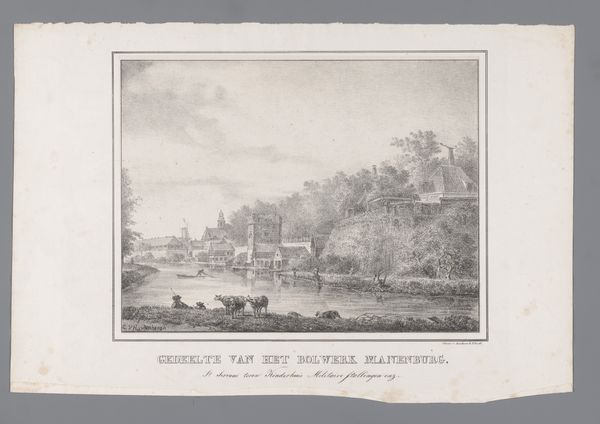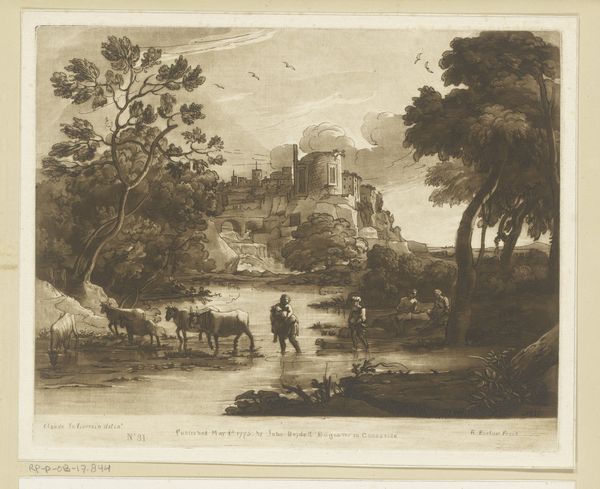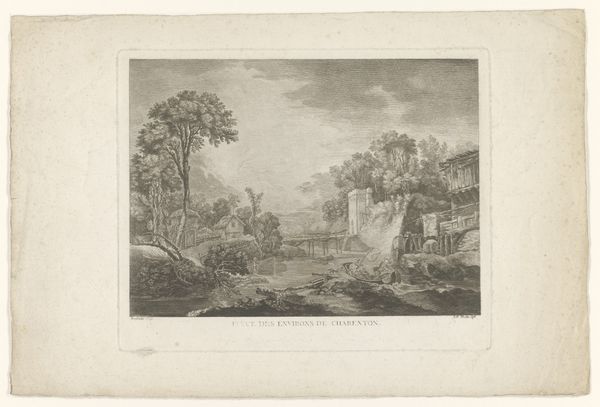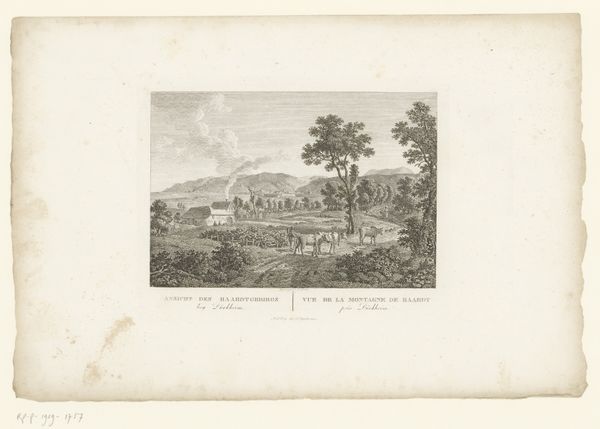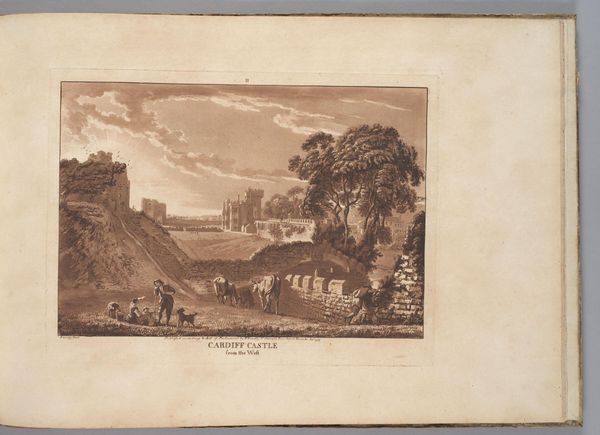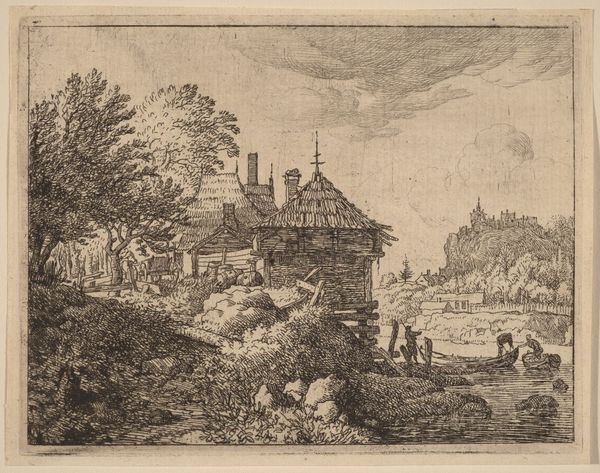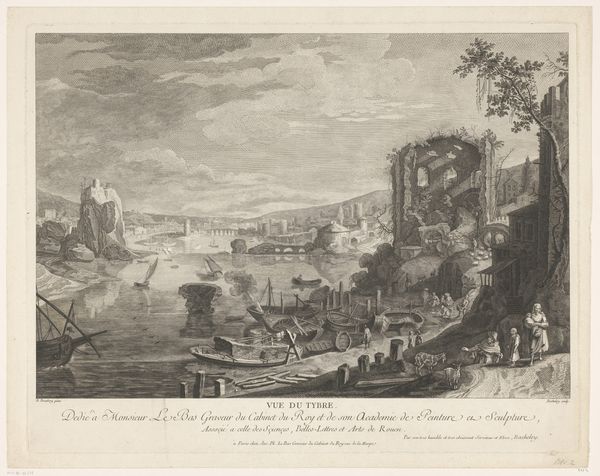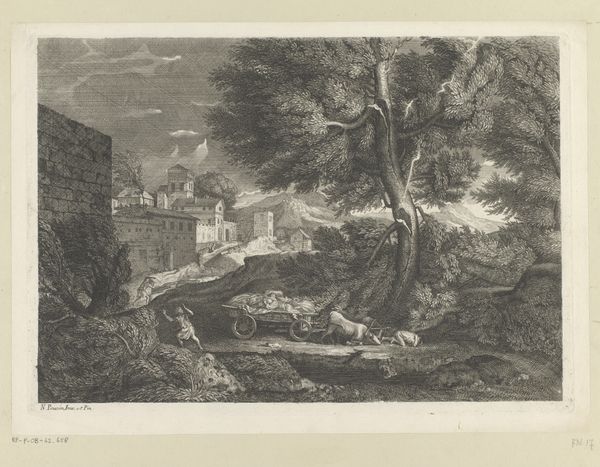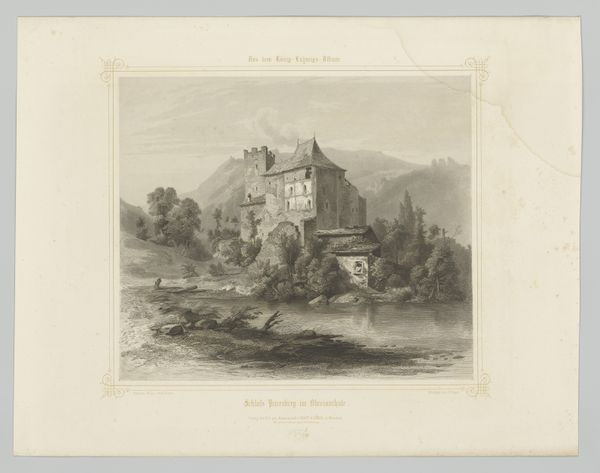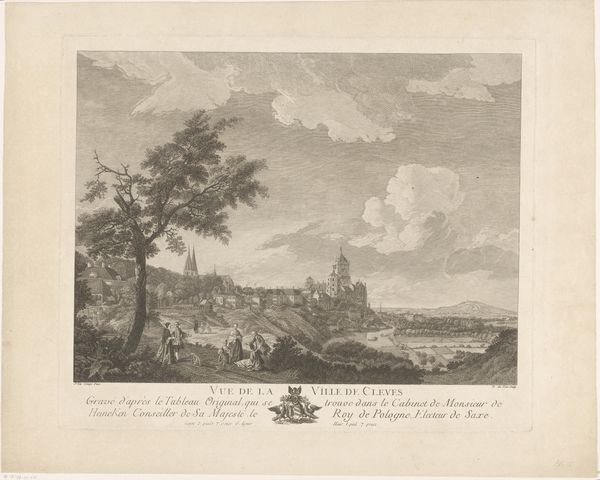
print, engraving
#
narrative-art
# print
#
landscape
#
romanticism
#
cityscape
#
engraving
Dimensions: height 258 mm, width 346 mm
Copyright: Rijks Museum: Open Domain
Curator: This is Hendrik Gerrit ten Cate's "View of the Ile Barbe near Lyon," an engraving from around 1827 or 1828. What catches your eye? Editor: It’s melancholic, somehow. The grey tones emphasize the stillness, and even with the figures in the boats, I feel a sense of solitude. The architecture atop the hill almost appears as though it's been placed precariously; there's an aura of decay about it. Curator: Notice how ten Cate orchestrates a visual hierarchy, from the detailed foreground – those skillfully rendered stones and timbers - to the graduated light playing on the water and, finally, the softly delineated structures on the island. It’s all meticulously balanced within the rectangle. Editor: The boats, though, aren't just compositional elements. Water travel in art has, for centuries, symbolized journeys, transitions – even passages from life to death. This island locale then carries an emotional charge as a destination or an uncertain ending point in some great narrative. Curator: Perhaps, but the island itself seems to have a powerful compositional function; its verticality rises emphatically against the expansive horizontal register of the water, achieving a tension, especially against the tonal variations of the light diffused throughout the surface, it all creates balance. Editor: And what's the narrative power embedded in these ruins? Ruins signify mortality, the inevitable passage of time. Lyon, and particularly Île Barbe with its history of monastic settlement, carries enormous cultural weight, so the decaying structure isn’t only decay. This print embodies layers of lost memory and fading faith. Curator: The engraving itself underscores a loss, it replicates but at one remove – even the texture is built up stroke by stroke rather than springing forth with more spontaneity. Perhaps the formal language speaks also to the passing of things, the memory that can only be replicated. Editor: True. These quiet engravings offer a portal to past visions, histories, long since shifted and recontextualized by modernity and the speed of image production.
Comments
No comments
Be the first to comment and join the conversation on the ultimate creative platform.
